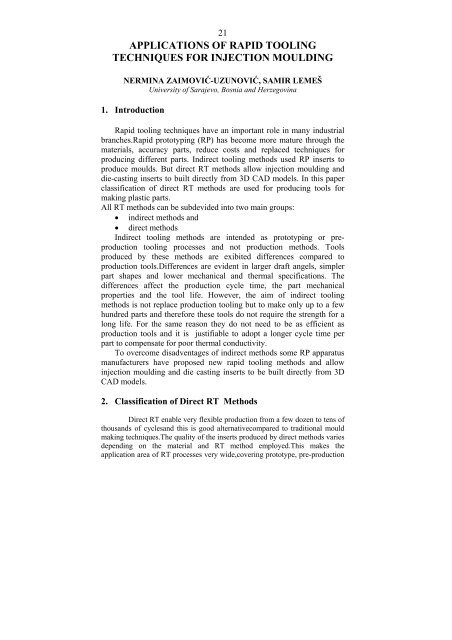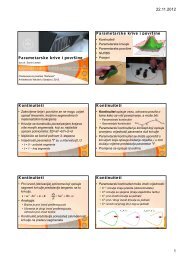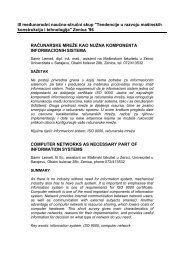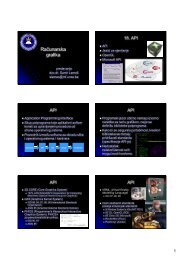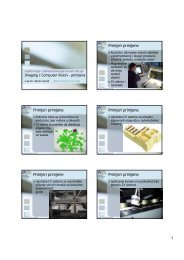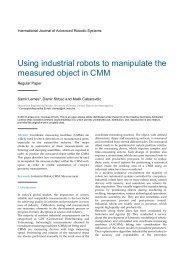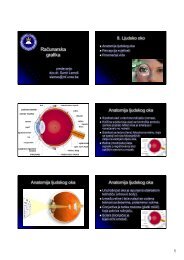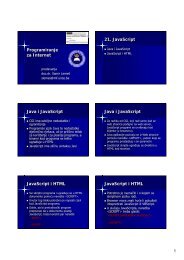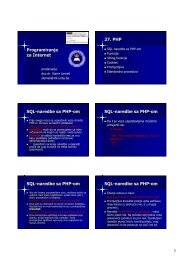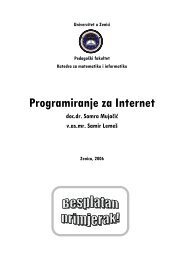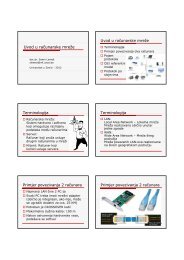Applications of Rapid Tooling Techniques for Injection Moulding
Applications of Rapid Tooling Techniques for Injection Moulding
Applications of Rapid Tooling Techniques for Injection Moulding
You also want an ePaper? Increase the reach of your titles
YUMPU automatically turns print PDFs into web optimized ePapers that Google loves.
22and production tooling.Direct RT processes can be devided into two maingroups.The first group includes less expensive methods with shorter leadtimes that are appropriate <strong>for</strong> tool validation be<strong>for</strong>e changes becomecostly.These methods are called "firm tooling" ( bridge tooling). Firm tooling isnot s<strong>of</strong>t nor hard tooling.It produces tools capable <strong>of</strong> short prototype runs usingthe same material and manufacturing process as <strong>for</strong> final production parts.The second group includes RT methods that allow inserts <strong>for</strong> preproduction and production tools to be built.RP apparatus manufacturers marketthese methods as "hard tooling" solutions .Hard toolingprocesses are based onthe fabrication <strong>of</strong> sintered metal (steel, iron and cooper) powder insertsinfiltrated with cooper or bronze.Methods developed on this manner are:• Direct ACES <strong>Injection</strong> Moulds (AIM),• Direct <strong>Rapid</strong>Tool Process ( Raspid Steel)• Laminated Object manufactured (LOM) Tools,• Cooper Polyamide (PA),• SandForm,• EOS Direct ToolProcess,• Direct Metal <strong>Tooling</strong> Using 3DP,• Topographic Shape Formation (TSF).2.1. Direct ACES <strong>Injection</strong> MouldsFirst steps in the moulds production concerns 3D model <strong>of</strong> theinjection mould. It can be drawn and then built using stereolitography process.The mould is built using the Accurate Clear Epoxy Solid (ACES) style. Afterfinishing the model <strong>of</strong> the mould the rest <strong>of</strong> the material removed.The thermalconductivity <strong>of</strong> the stereolitogrraphy resins is about 300 times lower than that<strong>of</strong> conventional tool steels.To reduce the amount <strong>of</strong> heat from the tool andreduce the injection moulding cycle time, copper water cooling lines are addedand back <strong>of</strong> the mould is filled with the mixture made <strong>of</strong> 30% <strong>of</strong> aluminiumgranulate and 70% <strong>of</strong> epoxy resin.The quality <strong>of</strong> the process depend <strong>of</strong> the shapes <strong>of</strong> the parts which isintended to be produced in the moulds. The second problem is a cooling <strong>of</strong> themoulds. But at the same time Direct AIM mould is as durable as an aluminiumfilled epoxy mould.The moulds are filled with the plastic.<strong>Injection</strong> cycle time islonger (3to 5 min.) in comparison (5 to 15 s) to clasical injection moulding.Thisprocess is sutable <strong>for</strong> moulding up to 100 parts. All activities (design, mouldand part production ) can be finished within one week.
232.2. Laminated Object ManufacturingLOM process is used to produce laminated moulds made <strong>of</strong> sheets <strong>of</strong>paper.Recent moulds are coated by the layers <strong>of</strong> metal.Inspite <strong>of</strong> that, LOMmoulds are used only <strong>for</strong> low melting thermoplastics and is not appropriate <strong>for</strong>injection moulding.2.3. DTM <strong>Rapid</strong> ToolThis process developed two processes:• <strong>Rapid</strong> Steel 1• <strong>Rapid</strong> Steel 2.The first method is caracterised by the used low carbon steel powder.Thisprocess has three steps.First step is a green part which is obtained by SLSprocess. At the same time in the powder low melting material is mixed as abinder.The green part is not durable and in the second step the part is heating ata low temperature and bind the particles <strong>of</strong> the material.This step includes longdrying time which depend <strong>of</strong> the part size.The last step is a finishing the part. Inthis stage part is covered into fully dense matal part by infiltration with amolten cooper.At the 1000°C sintering <strong>of</strong> the steel powder is happened and atthe 1120°C cooper infiltration occurs.The finished surfaces have a goodroughness and moulds can be developed by machining to the quality IT16.The second mentioned process <strong>of</strong> mould producing has several changes incomparison with firs one.The material is changed to the stainless steel.Bronzahas replaced copper as an infiltrant.Binder is changed too.Technologyparameters are changed and finished parts are less sensitive to the geometry <strong>of</strong>producing parts.Quality <strong>of</strong> the parts is increased and injection moulds canproduce ±0.1 mm accurate product.2.4. Copper Polyamide (PA)This process is suitable <strong>for</strong> production <strong>of</strong> the 100 to 400 parts fromcommon plastics.<strong>Tooling</strong> inserts are producing by SLS process.After the CADstage inserts are produced by the copper PA .They are very convenient <strong>for</strong>machining and finishing.Inserts have a better conductivity than the most palstictooling materials.2.5. EOS Direct Tool ProcessThis process uses specially developed machines, powders abdbinders.SLS process is used <strong>for</strong> sintering and strenghtening tool.After finishinfgthe process polishing can be done to increase the quality <strong>of</strong> the part.This
24process is comercialy oriented .Thousand products can be made <strong>for</strong> ordinarynecesities from the engineering plastics.2.6. Direct Metal <strong>Tooling</strong>This proces enables a production <strong>of</strong> the moulds using printing processto build mould. Ptinting materials in these cases are stainless steel,tungsten,and carbide. Process is continuoing after printing powder andbinder.The next step is a sinteringin a furnace to increase the strength.At theend the melting material infiltrate into the sintered part.Variation <strong>of</strong> this processcan be applied at the ceramic materials and build the moulds <strong>of</strong> ceramics.3. ConclusionsAfter rewiev <strong>of</strong> almost all methods <strong>for</strong> injection mould producing onething have to be mentioned.No one process is definitely mature. All <strong>of</strong> themcan be developed and improved.The main things in the new processes whichare dealing with the metal and ceramic moulds producing are materials,specially powders. Relationship between design <strong>of</strong> the product and tool have tobe improved additionaly improving the surface quality.The powerfull processescan save a time and a money and ask <strong>for</strong> development in the future.Referenceswww.dtm-corp.com/News/newsdesk.htm#presswww.eos-gmbh.dewww.<strong>for</strong>mus.comwww.me.mit.edu/groups/tdp/www.vr.clemson.edu/credo/RP_definitions.pdfwww.3dprinting.com


